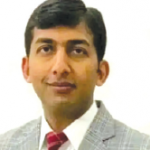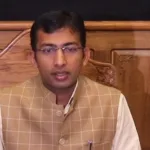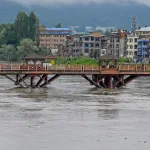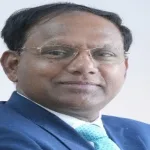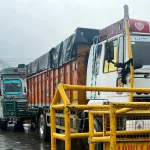New Delhi, Aug 05:
The Ministry of Information and Broadcasting on Tuesday convened a high-level conference with Information and Public Relations (I&PR) Secretaries from various States and Union Territories at VigyanBhawan, New Delhi. The meeting, chaired by Union Minister of State for Information and Broadcasting Dr. L. Murugan, and attended by Secretary I&B Shri Sanjay Jaju and other senior officials, focused on enhancing Centre-State coordination in media, expanding India’s creative economy, and improving digital public communication platforms.
In his address, Dr.Murugan highlighted several key initiatives, including the revamp of the India Cine Hub portal into a unified, single-window system offering seamless access to film-making permissions, incentives, and location mapping across India. With GIS-enabled features and standardised forms, the upgraded portal is designed to support ease of doing business and promote India’s position as a film-friendly nation under the leadership of Prime Minister Narendra Modi.
In a statement issued by PIB, the Minister also emphasised the government’s focus on empowering rural and semi-urban populations through grassroots cinema initiatives. These include the promotion of low-cost, modular theatre models aimed at increasing access to cinema infrastructure in underserved areas. He also underlined the significance of major upcoming international events like WAVES 2025 and the International Film Festival of India (IFFI) in Goa, which he said play a pivotal role in cultural diplomacy and in attracting global talent to India’s creative sectors.
Dr.Murugan drew attention to the Indian Institute of Creative Technology (IICT), recently launched to skill youth in creative fields such as animation, music, and gaming. This, he said, was part of a larger effort by the Government of India to foster a vibrant creator economy and open new employment avenues.
Secretary Sanjay Jaju, in his remarks, stressed the importance of integrated communication strategies between the Centre and the States. He urged all States and UTs to fully onboard the Press Sewa Portal, a digital single-window platform developed under the Press and Registration of Periodicals Act, 2023, which streamlines registration and compliance procedures for periodicals. He expressed concern over fragmented responsibilities in state media departments and called for more unified structures, particularly at the district level, to enable efficient communication.
Highlighting the growing role of vernacular media and digital content creators, Jaju underscored the economic potential of regional cinema and content creation. He encouraged States to support emerging talent, promote regional stories, and invest in infrastructure beyond metro cities. Initiatives like India Cine Hub, he said, were created to help content creators not only access resources but also monetise their work effectively.
Jaju also announced plans for a Radio Conclave to be held during the next edition of IFFI in Goa, aimed at fostering dialogue and cooperation within India’s evolving media ecosystem.
The India Cine Hub portal, which went live on June 28, 2024, was a major focus of the conference. The platform now functions as a comprehensive digital facilitation tool for the film sector, integrating filming permissions, incentive management, and resource mapping across Central, State, and local levels. So far, seven States and two UTs have completed full integration with the portal, while 21 States and six UTs have joined using a common application form.
The platform also features GIS-based location tagging, workflows for filming and non-filming projects, and industry-crowdsourced content. Officials discussed improvements in application processing and the contribution of verified location data to enhance India’s global appeal as a filming destination.
Another major subject of deliberation was the development of low-cost cinema infrastructure in regions with minimal access. Despite India being among the world’s largest film producers, many areas—particularly Tier-3 and Tier-4 towns, rural zones, and aspirational districts—remain underserved. The Ministry proposed identifying low screen-density zones using GIS, repurposing existing public spaces, and streamlining licensing procedures via the India Cine Hub. States were also encouraged to consider tax and land policy incentives to attract private investment in affordable cinema venues.
The conference also discussed how States could better leverage global content platforms such as IFFI and WAVES Bazaar. Delegates were urged to use these international events to promote filming destinations, showcase local talent, and highlight regional incentives. The 55th edition of IFFI had participation from 114 countries, while the WAVES Bazaar drew more than 2,000 delegates from 30 nations. States were advised to set up dedicated pavilions, facilitate film entries to Indian Panorama, and nominate local creators for global exposure.
The development of India’s live entertainment economy was another key area of focus. Officials discussed strategies for using existing sports and cultural infrastructure for hosting events, integrating permissions into the India Cine Hub, appointing nodal officers, and framing supportive policy and fiscal frameworks to promote private investment in this sector.
The conference concluded with a strong message of collaborative governance, reinforcing the need for joint efforts in media and creative development. Officials said the Centre and States must work hand in hand to build a digitally empowered, culturally rich, and economically dynamic India through strategic investments in media infrastructure and the creative economy.




